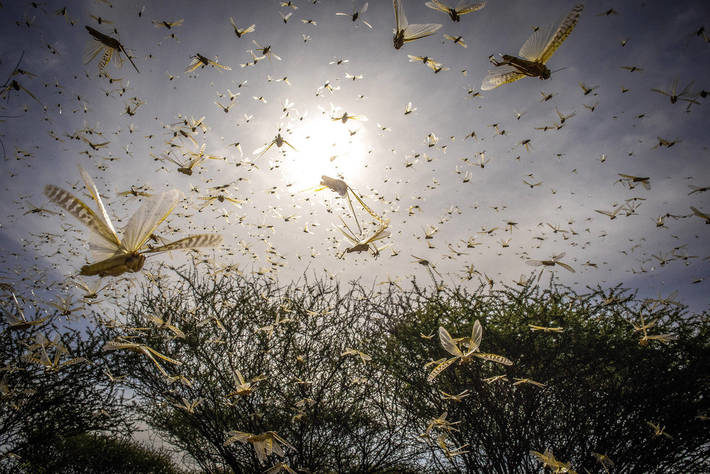ROME, ITALY — The Food and Agriculture Organization of the United Nations (FAO) is making gains in the fight against desert locusts in East Africa and Yemen but the organization’s director warns that a crisis still remains.
QU Dongyu, director general of the FAO, said that more needs to be done to prevent a food security crisis, as the ongoing rainy season not only provides livelihoods for farmers but also favorable conditions for locusts to breed.
The UN agency has continued to monitor the locust situation despite the global outbreak of the coronavirus (COVID-19) with the publication of a progress report on the locust control campaign.
Preliminary estimates from the FAO indicate that 720,000 tonnes of cereal have been saved in 10 countries by preventing the spread of Desert Locusts and damage to many more hectares.
“Our gains have been significant; but the battle is long and is not yet over,” Qu said. “More people are at risk of losing their livelihoods and worsening food security in the coming months.”
While swathes of treated land are now relatively free from the pest, the first wave of swarms has reproduced and a second wave of locusts will transition in June, taking flight at a time when many farmers in East Africa prepare to harvest their crops.
According to the FAO, the desert locust is considered the most destructive migratory pest in the world and a single swarm covering one square kilometer can contain up to 80 million locusts.
The current upsurge is a concern in the broader Eastern Africa region, with recently released forecasts from the Global Report on Food Crises indicating that more than 25 million people will face acute food insecurity in the region in the second half of 2020. In Yemen, where locusts have been reproducing in hard-to-access inland areas, an additional 17 million people are acutely food insecure. But those estimates were made before the impact of COVID-19 in a region of acute food insecurity.
“We can and must protect vulnerable people from the impact of multiple crises: conflicts, climate extremes, desert locusts and COVID-19, which threaten to cause a further dramatic deterioration in their food security,” Qu said. “To do this, we need to intensify our efforts further and focus not just on controls but on supporting the livelihoods of farmers and pastoralists so they can get through this.”
Since the FAO launched its desert locust response in January, its appeal has been $130 million funded. However, funding has concentrated on locust control activities and much more backing for livelihoods support activities is needed.
While locust control and surveillance operations are led by national governments, the FAO is providing support in the form of pesticides, bio-pesticides, equipment, aircraft and training.
So far this year, more than 365,000 hectares have been controlled in the 10 countries covered by the FAO appeal.
While governments keep expanding efforts to control the current upsurge with the FAO’s support, conditions remain favorable for locust reproduction and will require expanded efforts. The revised version of the appeal to be launched in the coming weeks is expected to also seek resources for Iran and Pakistan, which also are dealing with locust infestations.






